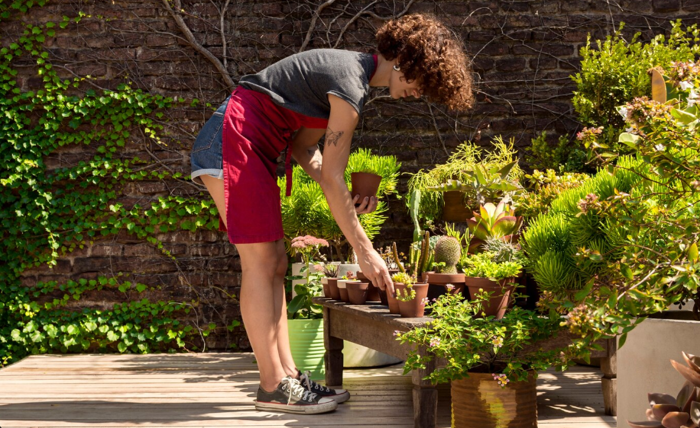Turning your backyard into a stunning, sustainable outdoor sanctuary doesn’t happen overnight—but it doesn’t have to be difficult, either. With eco-friendly practices growing in popularity, homeowners everywhere are looking for ways to upgrade their outdoor spaces in harmony with nature. Not only is this approach better for the planet, but it also creates a more inviting, low-maintenance space for you to enjoy.
Planning & Assessment
Before grabbing a shovel or planting your first seed, take time to assess what your outdoor space needs.
Evaluate the Current Space
Start by observing your yard. Where does the sun fall during the day? Are there areas that retain water or become overly dry? Which parts of your yard are thriving, and which aren’t? This information helps uncover potential problem areas and opportunities for improvement.
Enhancing your outdoor space can be both rewarding and sustainable, especially when you incorporate natural elements that blend seamlessly with the environment. Consider using native plants and materials that not only beautify your garden but also support local wildlife. For those in the Minnetonka area looking to elevate their landscaping projects, https://www.northwoodoutdoorservices.net/service-area/landscaping-minnetonka-mn/ offers a range of services tailored to the unique climate and terrain. By choosing eco-friendly options and expert guidance, you can transform your outdoor area into a stunning, functional space that reflects your personal style while respecting nature.
Set Clear Goals
Are you looking to create a lush garden, an outdoor entertainment area, or a serene retreat? Decide what you want from your outdoor space so your upgrades feel intentional and cohesive. Remember to focus on sustainable goals, such as reducing water usage, supporting local biodiversity, or minimizing waste.
Soil Health
Healthy soil is the foundation of any thriving outdoor space. Learning about your soil composition should be one of your first steps.
Understand & Test Your Soil
Good soil paves the way for healthy plants. Start by performing a soil test to determine its pH, nutrients, and texture. Testing kits are inexpensive and available at most gardening stores.
Natural Ways to Improve Soil
If your soil is depleted, opt for natural amendments rather than chemical fertilizers. Here’s how to enhance soil health naturally:
- Composting: Add organic matter like fruit peels, coffee grounds, and grass clippings.
- Cover Crops: Plant green manure crops such as clover or rye, which restore nutrients to the soil.
- Mulching: Apply a layer of organic mulch to conserve moisture and regulate soil temperature.
Plant Selection
Choosing the right plants for your natural outdoor space is essential for long-lasting beauty and sustainability.
Go Native & Adaptive
Native plants are a sustainable solution because they have evolved to thrive in your local environment. They require less water, fewer fertilizers, and minimal pest control. Adaptive plants, while non-native, are hardy enough to withstand your region’s climate conditions.
Mix Functionality with Aesthetics
Opt for a mix of flowering perennials, shrubs, and ground cover. This not only enhances variety but also provides shelter and food for pollinators like bees and butterflies. You’ll be adding beauty and contributing to your local ecosystem.
Pro tip: Group plants with similar water and sunlight needs together (a technique called “hydrozoning”) to make maintenance easier and water use more efficient.
Water Conservation
Conserving water is a key focus of sustainable outdoor upgrades. Luckily, there are several effective strategies to help you manage water usage.
Rainwater Harvesting
Install a rain barrel or cistern to collect and store rainwater that you can use to irrigate your plants. It’s a simple, eco-friendly way to conserve water while reducing your utility bill.
Efficient Irrigation
Drip irrigation systems deliver water directly to the roots of your plants, reducing evaporation and runoff. Pair this technique with a smart irrigation controller that adjusts watering schedules based on weather conditions for maximum efficiency.
Natural Hardscaping
Enhance the functionality of your outdoor space with pathways, patios, and structures made from sustainable materials.
Sustainable Materials
For pathways, consider permeable materials like gravel or pavers, which allow water to soak into the ground instead of pooling on surfaces. Reclaimed wood or locally sourced stones are also great options for patios and decks.
Edging
Enhance the definition and structure of your landscaped spaces with durable aluminum edging, now available in regions such as Salt Lake City. It’s a durable, eco-friendly material that’s lightweight, recyclable, and resistant to weathering. It keeps pathways and garden beds looking polished while standing up to the test of time.
Pest & Weed Control
A natural outdoor space should be free of harmful chemicals. Use organic methods to manage pests and weeds while protecting beneficial insects and plant life.
Natural Pest Control
- Introduce helpful insects like ladybugs and praying mantises to control aphids and other harmful pests.
- Use neem oil or homemade sprays with ingredients like garlic and chili to deter pests organically.
Organic Weed Management
Regularly pulling weeds by hand, applying mulch to prevent weed growth, and using all-natural herbicide alternatives, such as vinegar, can keep your gardens tidy and chemical-free.
Maintenance
The secret to a thriving outdoor space is consistent care. Here are tips to keep your yard naturally gorgeous in the long term.
Seasonal Care
- Clean up fallen leaves and debris to prevent decay.
- Rotate seasonal plants to keep your garden dynamic and fresh.
Fertilize and Mulch
Apply compost or natural fertilizers twice a year for plant nourishment. Mulch garden beds annually to suppress weeds, conserve moisture, and enrich the soil.
Monitor and Adjust
Keep an eye on your plants, soil, and water usage to ensure everything is functioning as intended. Adjust elements as seasons, climates, and needs change.
Conclusion
Upgrading your outdoor space naturally isn’t just a trend; it’s about creating harmony between your lifestyle and the environment. By focusing on soil health, native plants, water conservation, and natural materials, you can build a visually stunning and eco-friendly retreat that will make you proud. Not sure where to start? Test your soil, create a plan, or contact a local landscaping expert for advice. Begin your backyard transformation today!







